The anthem of the European Union
The melody comes from the Ninth Symphony composed in 1823 by Ludwig Van Beethoven. In 1985, it was adopted by the EU heads of State and government as the official anthem of the European Union. In 1972, the Council of Europe (the same body that designed the European flag) adopted Beethoven's "Ode to Joy" theme as its own anthem. The well-known conductor Herbert Von Karajan was asked to write three instrumental arrangements - for solo piano, for wind instruments and for symphony orchestra. Without words, in the universal language of music, this anthem expresses the ideals of freedom, peace and solidarity for which Europe stands.
The motto of the European Union
The motto of the European Union is“United in diversity”.The motto means that, via the EU, Europeans are united in working together for peace and prosperity, and that the many different cultures, traditions and languages in Europe are a positive asset for the continent.
INTERPOL's DISTINCTIVE SIGNS
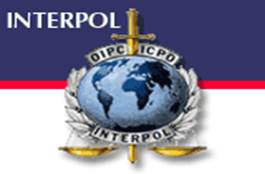
The official nameis 'ICPO-INTERPOL'. 'ICPO' stands for 'International Criminal Police Organization'. The word 'INTERPOL' is a contraction of 'international police', and was chosen in 1946 as the telegraphic address. In 1956, the International Criminal Police Commission changed its name to become the International Criminal Police Organization - INTERPOL.
The emblem, in use since 1950, comprises the following elements:
· a representation of the globe, to indicate that INTERPOL's activities are worldwide
· olive branches at either side of the globe to symbolize peace
· the name 'INTERPOL' below the globe in the centre of the olive branches
· a vertical sword behind the globe to represent police action
· the abbreviations 'OIPC' and 'ICPO' above the globe at either side of the sword
· the scales below the olive branches to symbolize justice.
THE FLAG OF INTERPOL
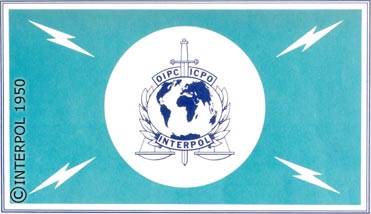
The flag has been in use since 1950: it has a light-blue background , the four lightning flashes arranged symmetrically around the emblem represent telecommunications and speed in police action.

In 1971, motivated by their vision of a green and peaceful world, a small team of activists set sail from Vancouver, Canada, in an old fishing boat. These activists, the founders of Greenpeace, believed that a few individuals could start changes. Their mission was to "bear witness" to US underground nuclear testing at Amchitka, a tiny a volcanic island in the southwest of Alaska, which is one of the world's most earthquake-prone regions.
NATO
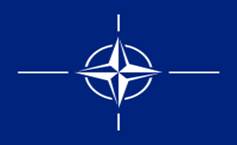
NATO Emblem was adopted as the symbol of the Atlantic Alliance by the North Atlantic Council in October 1953. The circle is the symbol of unity and cooperation and the compass rose suggests the common road to peace taken by the member countries of the Atlantic Alliance.
THE UNITED NATION
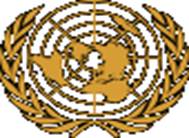
In 1945, the representatives of 50 countries met in San Francisco at the United Nations Conference on International Organisation to draw up the United Nations Charter. Poland, which was not represented at the Conference, signed it later and became one of the original 51 member states. United Nations Day is celebrated on 24 October each year.
The motto is - TheUN Works for People and the Planet.
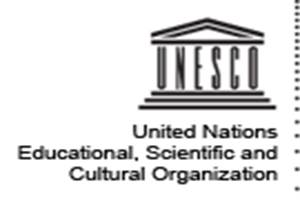
The United Nations Educational, Scientific and Cultural Organization is a specialized agency of the United Nations established on 16 November 1945. UNESCO’s mission is to contribute to the building of peace, the eradication of poverty, sustainable development and intercultural dialogue through education, the sciences, culture, communication and information. The Organisation has now 193 Member States and 7 Associate Members. Most Member States have established Permanent Delegations to UNESCO which, headed by Ambassadors, undertake liaison between the Organisation and their governments. All Member States have established a National Commission for UNESCO. The UNESCO National Commissions are national cooperating bodies set up by the Member States for the purpose of associating their governmental and non-governmental bodies with the work of the Organisation.
UNESCO's governing bodies
The General Conference consists of the representatives of the States Members of the Organisation. It meets every two years, and is attended by the Member States and Associate Members, together with observers for non-Member States, intergovernmental organisations and non-governmental organizations (NGOs). Each country has one vote. . It also elects the Members of the Executive Board and appoints, every four years, the Director-General. The working languages of the General Conference are Arabic, Chinese, English, French, Russian and Spanish.
The Executive Board, in a sense, assures the overall management of UNESCO. It prepares the work of the General Conference and sees that its decisions are properly carried out. Its fifty-eight members are elected by the General Conference. The Executive Board meets twice a year.
CONTENTS
| Module I: About myself. Applying for a job_______________3 | ||
| Text 1: About myself __________________________________3 | ||
| Text 2: Applying for a job ______________________________4 | ||
| Text 3: Job Interview___________________________________6 | ||
| Module II: Education _________________________________9 | ||
| Text 1: Educational System in Russia______________________9 | ||
| Text 2: Our University_________________________________11 | ||
| Text 3: My study______________________________________13 | ||
| Text 4: Education in Great Britain________________________14 | ||
| Text 5: Higher education in the USA______________________15 | ||
| Module III: Across Countries__________________________19 | ||
| Text 1: The Russian Federation__________________________19 | ||
| Text 2: The United Kingdom of Great Britain and Northern Ireland______________________________________________22 | ||
| Text 3: The United States of America______________________24 | ||
| Text 4: The Commonwealth_____________________________26 | ||
| Text 5: Canada _______________________________________28 | ||
| Text 6: The Commonwealth of Australia___________________29 | ||
| Text 7: New Zealand___________________________________31 | ||
| Module IV: Railways______________________________________37 | ||
| Text 1: From the History of the Railways___________________37 Text 2. Main Railway Notions___________________________39 | ||
| Text 3: British Railways_____________________________40 | ||
| Text 4: Russian Railways_______________________________41 | ||
| Text 5: Joint Stock Company Russian Railways______________43 | ||
| Text 6. Railway Reforms in Russia________________________45 Text 7. Logistics ______________________________________46 | ||
| Module V: Ecology________________________________________43 | ||
| Text 1: Ecology and Environmental Protection ___________________43 Text 2 Transport Ecology____________________________________46 Text 3 Green IT____________________________________________47Text 4 Ecology and Computers________________________________48 | ||
| Module VI International Organisations ______________________50 Text 1: International Organisations_______________________50 | ||
| Text 2: The European Union____________________________52 | ||
| Text 3: International Criminal Police Organisation (INTERPOL)________________________________________55 | ||
| Text 4: The Organization for Security and Co-operation in Europe (OSCE)_____________________________________________57 | ||
| Text 5: The World Trade Organization_____________________59 | ||
| Te Text 6: Greenpeace____________________________________60 | ||
| Text 7: The North Atlantic Treaty Organization (NATO)______62 | ||
| Text 8: The Organization of the United Nations_____________63 | ||
| Text 9: International Railway Organisations________________65 | ||
| Text 10: The Community of European Railways_____________67 | ||
| Appendix ___________________________________________69 | ||
| № 1: CURRICULUM VITAE (CV)______________________69 | ||
| № 2: Sample CURRICULUM VITAE____________________70 | ||
| № 3: Sample APPLICATION LETTER___________________71 | ||
| № 4: The Russian Federation____________________________72 | ||
| № 5:Higher Education Institutions in Russia_______________73 | ||
| № 6: Britain and the Commonwealth______________________75 | ||
| № 7: The United States of America_______________________80 | ||
| № 8: International Organisations_________________________81 № 9: INTERPOL's Distinctive Signs______________________83 | ||
